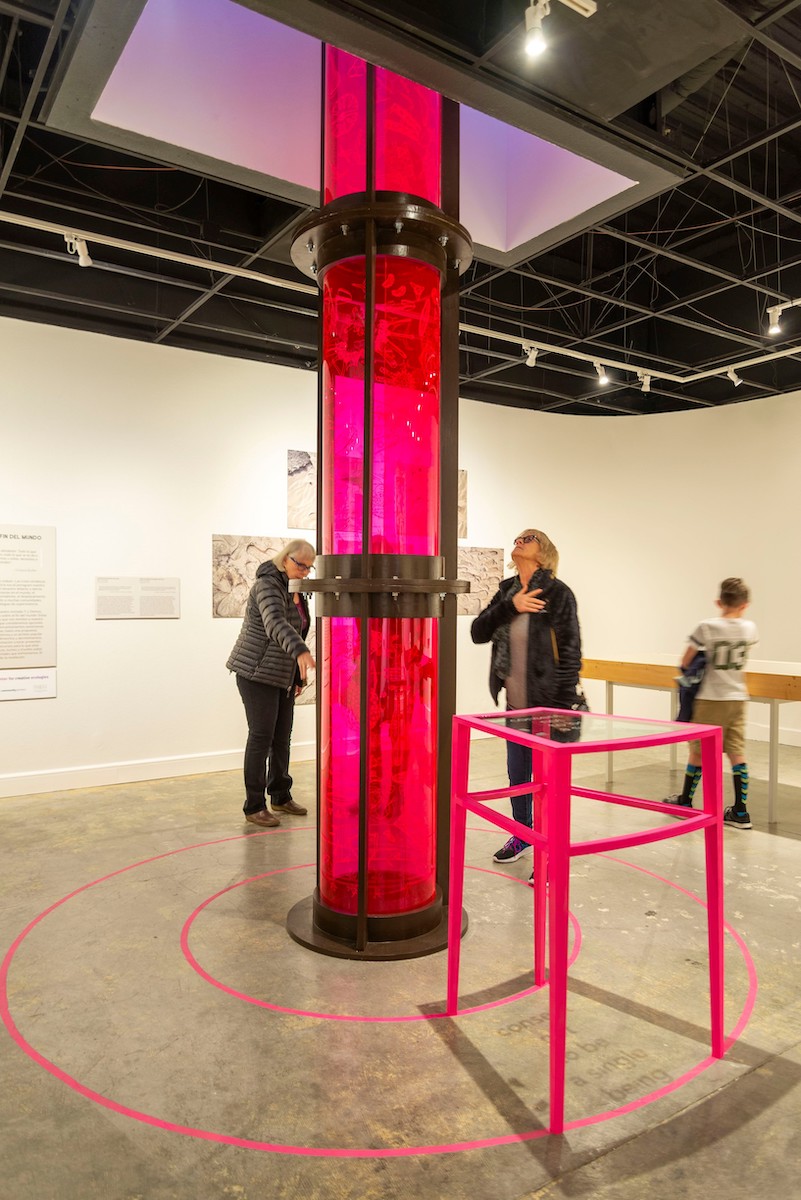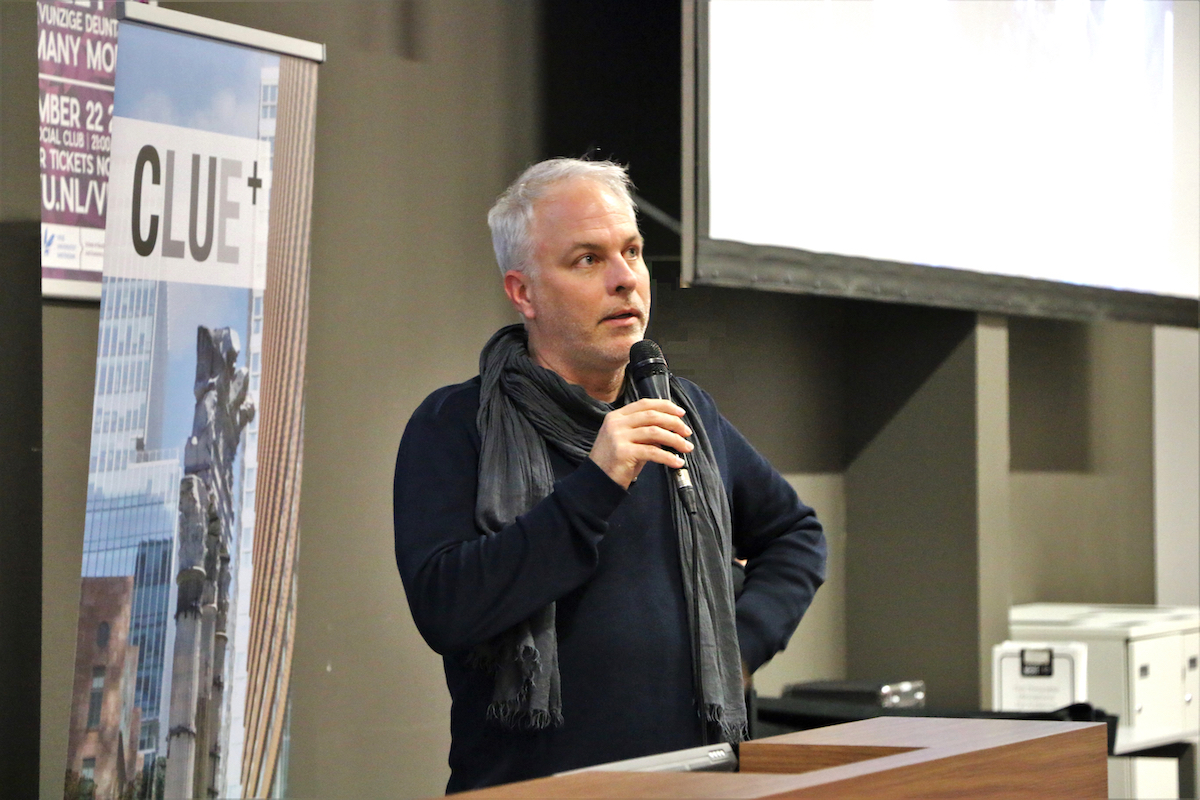T.J. Demos is Professor in Art History and Visual Culture as well as Founder and Director of the Center for Creative Ecologies at the University of California, Santa Cruz. Last year, he published Beyond the World’s End: Arts of Living at the Crossing a book exploring the radical world-making potential of contemporary art and activism in relation to changing climates. I met with Demos over the phone to discuss these intersections and the meaning of climate today.
Artillery: The topic of this issue of Artillery is climate. You are the director of the Center for Creative Ecologies, and you speak of both environmental and climate crises. Could you start out by defining these three different terms; ecology, environment and climate?
T.J. DEMOS: They are all interconnected, all concerning the urgent situation we find ourselves in today, living under the destruction of lives and environments under racial and colonial capitalism. Climate is a crucial term for me and many people these days as we are entering into a severe period of climate breakdown, evident in the catastrophic wildfires in the Northwest US, Canada and Siberia, and catastrophic flooding in Henan province in China, in Western Germany, Belgium, and the Netherlands. The signs are clear that we are undergoing rapid transformation of the natural systems that have provided for flourishing biodiverse life. While the natural sciences give us that picture, my work is also committed to thinking more broadly about these terms—climate, environment, ecology—and how they connect to the politics of socio-economic inequality and social justice and injustice. Climate change doesn’t just happen, it happens to specific people in specific places. We know that those with more resources—for instance money, housing, transportation, health care—are better equipped to deal with negative climate impacts, whereas the more vulnerable, those who have suffered disenfranchisement, political exclusion, and economic impoverishment, often over generations, are at the forefront of climate catastrophe, with the loss of housing, jobs, and healthcare resources, structural racism, and exploitation. Ultimately, climate includes the sociopolitical and economic elements of inequality that structure our world, as much as the biogeophysical. This is the context of climate breakdown and ecologies of intersectionality that I research. There’s lots of creative and critical engagements with this more expansive understanding of ecology, environment, and climate in contemporary art and visual culture, targeting ecologies of affluence, environments of inequality, and climates of racism. The challenge is thinking them together with climate change as understood in the natural sciences.
You’ve mentioned before how climate and climate change run the risk of becoming too generic terms. How do you have a broad definition of climate while at the same time insisting on it being a specific and political term?
Much climate-based activism within social movements is intent on declaring a climate emergency owing to the growth of atmospheric carbon pollution and resulting global warming. But within other contexts of social justice activism, organizers are looking at what else emergency means, and they’re finding that it’s not simply in the future, but rather in the past. Melanie Yazzie of The Red Nation, a revolutionary Indigenous organization, says that climate justice began in 1492 with struggles against colonial violence, including socio-environmental violence such as deforestation, forced plantation labor, land appropriations, agricultural transformations, cultural genocide. The challenge is, how do we integrate these different approaches to emergency, and refuse to participate in the forgetting of that past, instead integrating the politics of decolonization, abolition, and climate-justice activism within our environmental politics more broadly. For me, it’s crucial to avoid participating in the colonial act of de-futuring whole communities because we’re focused on a narrow conception of climate change instead of the climates of racial and colonial capitalism. Proposals like the The Red Black & Green New Deal, from The Movement for Black Lives, present this kind of comprehensive analysis we all need to get behind.
In Beyond the World’s End you mention various political movements and autonomous communities—like Standing Rock, the ZAD, Rojava and the Zapatistas. What do such communities mean to the climate on a larger, international scale?
These examples are all highly visible and mediagenic. While being local struggles, they all have larger ambitions. Standing Rock—an ongoing protest against the expansion of fossil fuel infrastructure, specifically oil pipelines in North Dakota—was not limited to that single event and, more broadly, concerns claims for Indigenous sovereignty and a post-carbon future in the Americas. It’s a struggle against fossil capitalism itself, premised on the understanding that we live in this comprehensive system of global capitalism based on a fundamental contradiction, according to which capitalism is driven to produce more and more value but devalues those who produce it, and devalues the material sources of earthly wealth on which it depends. It’s clear that capitalism is the cause of climate breakdown, and it’s structurally incapable of fixing the problem. The question for those of us who are dedicated to climate justice is, how can we link up the local to the global, to actually challenge the domination of this global economic system that is intent on destroying conditions of life on Earth? Anti-colonial land and water protectors are attempting to do just that. There are glimmers of hope in some of these practices and in their potential networking and organising activities too—including the transnational networking of Indigenous resurgence, Idle No More and The Red Nation, connecting to the current resistance against Enbridge’s proposed Line 3 pipeline in Minnesota, the autonomous zone at the ZAD in France and their attempts to live a non-alienated life connected to the commons and multispecies flourishing, and Rojava’s anti-patriarchal freedom fighters, in part inspired by the social ecology of US anarchist Murray Bookchin, which sees environmental violence reflecting and extending the social violence that happens between people. These are only the most visible of the infinite number of local practices found just about everywhere today that are dedicated to living life otherwise.

Rasquache Collective (Ann Altstatt, Federico Cuatlacuatl, Karina A-Monroy, and Kyle Lane-McKinley), BordersBordados: A Rasquache Time Machine, 2020, mixed media.
In the book, you argue that maybe we should treat this political organizing as the most interesting contemporary art taking place. However, is it potentially reductive to speak of activism as art?
It is a complex and challenging argument to make. I’m not suggesting that all activism is simply art, but rather trying to expand understandings of what art is, connecting it to a world-building creativity that everyone is capable of and in fact practices in their own ways and in everyday life. In this sense, it’s possible to understand activism as fundamentally creative, dedicated to living otherwise, and claiming a political aesthetics that exceeds the boundaries of what’s capturable in commercial art institutions and the luxury commodities that the wealthy class invests in. How might art dignify and grant aesthetic expression to the struggles for collective well-being, social justice and multi-species flourishing? These are the questions I’m trying to ask, beginning with democratizing the category of art.
How do you as a curator engage with the relationship between art and activism, for example in your most recent show at The Santa Cruz Museum of Art & History (MAH)?
Institutional spaces are filled with contradiction and complexity. There are certainly material forces of capital flowing through institutions, guiding them in clear ways. But there are also energies of resistance, radical imagination and critical transformation that are occurring at the same time. When I engage with institutions, I’m always trying to be conscious of those contradictions and operate within them, including by joining collective struggles for institutionalizing otherwise—through models that are nonprofit, dedicated to collective joy and emancipation, not ones that appropriate collective wealth and are run by billionaires. See for instance the urgent initiative Strike MoMA in New York and its attempt to liberate and decolonize institutions. The MAH exhibition I organized assembled a range of artistic works to present options for thinking critically and imaginatively about futurity, asking how the world-to-come can connect with social justice and environmental flourishing in ways that recognize the long history of catastrophe as it has unfolded during periods of colonisation, indigenous genocide, and transatlantic slavery. “Beyond the World’s End“ was a small group exhibition in a local, community museum space. The intervention was about introducing audiences to the amazing possibilities of speculative thinking about the future within the artistic context, including by joining conventional science-oriented understandings of climate and ecology with approaches to social justice, de-colonial, anti-racist understandings of climate and ecology, as with Afro-futurist and ecosocialist practices. It was an invitation to think about, feel, and perceive this more expanded, comprehensive understanding of what climate, ecology, and environment can mean today. Emancipatory futurity begins with creative imagination.


